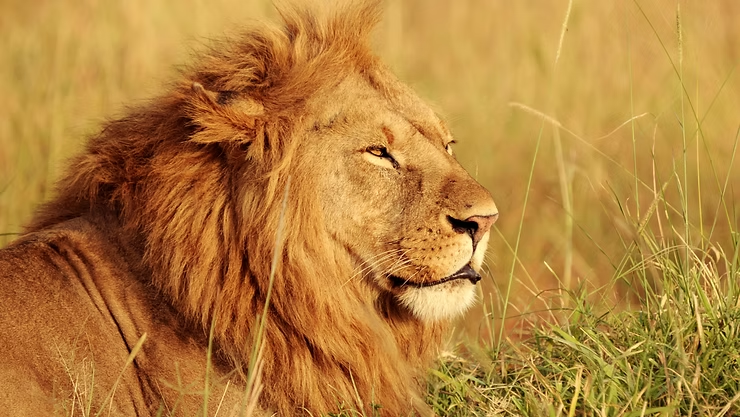The King of the Jungle: Lions
Lions are majestic creatures known as the King of the Jungle. With their powerful roar, striking appearance, and social behavior, lions have captivated humans for centuries. They live in prides, hunt cooperatively, and exhibit strong family bonds. However, lions are vulnerable due to habitat loss and poaching, making conservation efforts vital.
Key Takeaways
- Lions are the only social big cats.
- They have a powerful roar audible up to 5 miles away.
- Lions live in prides led by dominant females.
- They are skilled hunters with a varied diet.
- Lions are listed as vulnerable due to habitat loss and illegal hunting.
Social Behavior
Lions are the only truly social big cats, living in groups called prides. A pride typically includes related females, their offspring, and a few adult males. Females primarily hunt while males defend the pride and territory. Social behaviors include grooming, play, and vocal communication, ensuring strong bonds and coordinated hunting strategies.
Majestic Appearance
Lions are visually striking with golden fur, piercing eyes, and muscular builds. Male lions have manes, which symbolize dominance, attract mates, and protect during fights. Lions carry themselves with confidence and grace, showcasing both elegance and power across the savannah.
Powerful Roar
Lion roars are heard up to 5 miles away. They communicate pride location, establish territory, and display dominance. Male roars warn rivals and reinforce their status as the king of the jungle, while female vocalizations maintain social bonds within the pride.
Hunting and Feeding
Lions are skilled hunters, using strength, agility, and teamwork. They prey on zebras, wildebeests, buffalo, and smaller animals, often coordinating attacks in prides. Lions are also opportunistic feeders, scavenging from other predators or eating smaller prey when needed.
Family Life and Prides
Lions live in prides, with females leading hunting efforts and raising cubs collectively. The oldest females often guide the pride, ensuring social cohesion. Males defend the pride and participate in hunting. Strong family bonds increase survival chances, as cooperation ensures food acquisition and territory protection.
Physical Characteristics
Lions are the second-largest big cats, with muscular bodies and sharp retractable claws. Male manes vary in color and size, indicating dominance and health. Their strength, agility, and social adaptations make them highly effective predators and iconic members of the animal kingdom.
Habitat and Distribution
Lions primarily inhabit grasslands and savannahs in Africa, with a small population in India’s Gir Forest. Open landscapes facilitate hunting and social interaction. Lions’ distribution covers Kenya, Tanzania, South Africa, Botswana, and India, demonstrating adaptability across diverse habitats.
Threats and Conservation
Lions are listed as vulnerable by the IUCN due to habitat loss, poaching, and human-wildlife conflict. Conservation efforts include habitat protection, anti-poaching measures, and promoting coexistence with humans. Awareness and sustainable land use are crucial to ensure the survival of these majestic predators.
Conclusion
Lions are fascinating apex predators, combining majestic appearance, social bonds, and hunting prowess. Threatened by human activity, they require protection and conservation efforts. Appreciating and preserving lions ensures their survival for future generations and maintains their role as the iconic King of the Jungle.
Frequently Asked Questions
- Are lions really the king of the jungle? They live in grasslands and savannahs, not jungles.
- Do lions live in groups? Yes, lions live in prides consisting of related females, offspring, and a few males.
- Do lions have a matriarchal society? Yes, females lead hunting and raise cubs collectively.
- Why do male lions have manes? To attract mates, signal dominance, and protect their necks in fights.
- What do lions eat? Large ungulates such as zebras and wildebeests; also smaller prey and scavenged food.
- Are lions endangered? Yes, they are vulnerable due to habitat loss, poaching, and human conflict.
- How fast can a lion run? Up to 50 mph (80 km/h) in short bursts, relying on ambush hunting.
- Can lions swim? They can swim but generally prefer land and avoid water.

